A business is only as efficient as its processes.
This statement holds true for every organization, regardless of its size or complexity. We all operate on defined processes that guide us towards our business goals. We can run smoothly and deliver ongoing value only when these processes are well-formalized and clear.
To achieve operational excellence, companies must constantly improve their business processes. This means focusing on each process step, from start to finish.
This article explores the BPM lifecycle, breaking down its phases and their significance.
Understanding Business Process Management (BPM)
Business Process Management (BPM) is the systematic way of organizing and streamlining business processes to achieve or improve business goals. BPM combines process improvement techniques, automation, and monitoring to ensure that every business process functions at optimal levels.
It is critical to remember that BPM is an ongoing effort that requires continuous improvement rather than a one-time initiative. This commitment to aligning business processes with shifting organizational goals keeps the team engaged and focused while helping to reduce costs and improve customer satisfaction.
What Is the BPM Lifecycle?
The BPM lifecycle is a cyclical process that includes several phases, each contributing to the overall improvement of business processes. This lifecycle provides a standardized approach to ensuring that business processes are well-designed, executed, and optimized over time.

The BPM Lifecycle: The 5 Key Phases Explained
Let's breakdown and explore the five BPM stages in detail.
1. Initiation
The BPM lifecycle starts with a deep dive into your business’s current processes. The goal is to pinpoint those processes most in need of improvement. This can be achieved through methods such as feasibility studies, internal workshops, or process mining.
Once identified, processes are prioritized based on factors like their alignment with business objectives, potential improvement gains, and the resources required.
To visualize the entire process, create structured visualizations using flowchart symbols, digital whiteboards, or value stream maps. This visual representation of workflows with process maps is crucial for spotting inefficiencies, understanding wait stages, and targeting areas for improvement.
 Mapping pizza-making process using a flowchart
Mapping pizza-making process using a flowchart
The identification stage is not a solo mission but a team effort that involves all teams. The collaborative approach ensures that everyone's perspective is heard and contributes to the overall improvement process with fresh ideas. Stakeholder participation is particularly essential for setting desired outcomes and defining key performance metrics.
2. Analysis
Once the need for process improvement is clear, the next step is to review the existing business process and analyze every step. This step is crucial as it helps spot process bottlenecks or delays and uncover inefficiency. The outcome of this analysis is to develop an action plan for process optimization outlining the key process events.
 Identifying process bottleneck using a kanban board in Businessmap
Identifying process bottleneck using a kanban board in Businessmap
This plan might include finding opportunities to automate repetitive tasks, adding new steps, or removing unnecessary steps that slow the process or produce extra costs, human errors, or customer dissatisfaction.
The essence of this phase is to understand the “as-is” state of the process. This model not only provides a clear understanding of the process flow, decision points, and activities involved but also serves as a blueprint for the improved process.
3. Design
The design phase is about restructuring existing processes to eliminate roadblocks and enhance performance. It includes any activities creating a new and desired or optimized “to-be” process design that addresses the identified gaps and aligns with organizational objectives.
This stage is about identifying roles, redesigning workflows, and defining goals and activities, all based on the analysis done in the previous stage. A key aspect of this stage is the continuous observation and review of processes. Any feedback is not just welcomed, but actively sought, to further optimize and improve the design and operation of the processes.
The grand goal is to develop a system that works in favor of the company goals and achieves maximum efficiency and effectiveness. Good practices to accomplish this may involve process automation, using appropriate tools and techniques to improve performance, and adopting improvement methods.
4. Implementation
The fourth phase is about process deployment. Putting the redesigned processes into practice often involves training employees and making necessary organizational changes. To avoid breaking the process flow and to be able to act accordingly in case of an error, it is better to start with a testing evaluation in the early stage. Only when you trust the process can you roll out the changes company-wide.
Technology like workflow management software is often employed to facilitate smooth process execution.
 Visualizing timelines, initiatives and work items breakdown in Businessmap
Visualizing timelines, initiatives and work items breakdown in Businessmap
5. Monitor
In this final phase, organizations track the performance of the processes to assess the effectiveness of the new processes in real time. Monitoring involves:
- Gathering data on key performance indicators (KPIs).
- Identifying discrepancies between expected and actual performance.
- Using dashboards and analytics tools to assess process efficiency.
Continuous monitoring is a powerful approach that enables organizations to swiftly identify and resolve issues, ensuring that processes operate at their peak efficiency.
BPM Optimization and Continuous Improvement
BPM is a dynamic, ongoing journey, not a static endpoint. Organizations must consistently analyze performance data and solicit feedback to sustain its effectiveness. This enables them to refine processes and adapt to evolving business landscapes and customer needs.
Process optimization is an unceasing endeavor that should permeate all stages of the BPM lifecycle. By continuously scrutinizing every process step, organizations can uncover opportunities for improvement and refine them iteratively, unlocking even greater results.
As a testament to this, distribution logistics company Encoparts revolutionized its international purchasing division, achieving a staggering 33% boost in operational efficiency through the power of value stream mapping.
The organization unlocked hidden potential by visualizing the process, eliminating waste, and streamlining workflows with the help of a powerful BPM system. This data-driven approach empowered the team to make informed decisions and drive significant improvements.
 Operational efficiency data of a purchasing workflow before and after process improvement
Operational efficiency data of a purchasing workflow before and after process improvement
The results testify to the transformative impact of tracking process performance data. Organizations can unlock extraordinary results and achieve operational excellence by monitoring key metrics and embracing continuous improvement.
Businessmap is the most flexible software
to align work with company goals





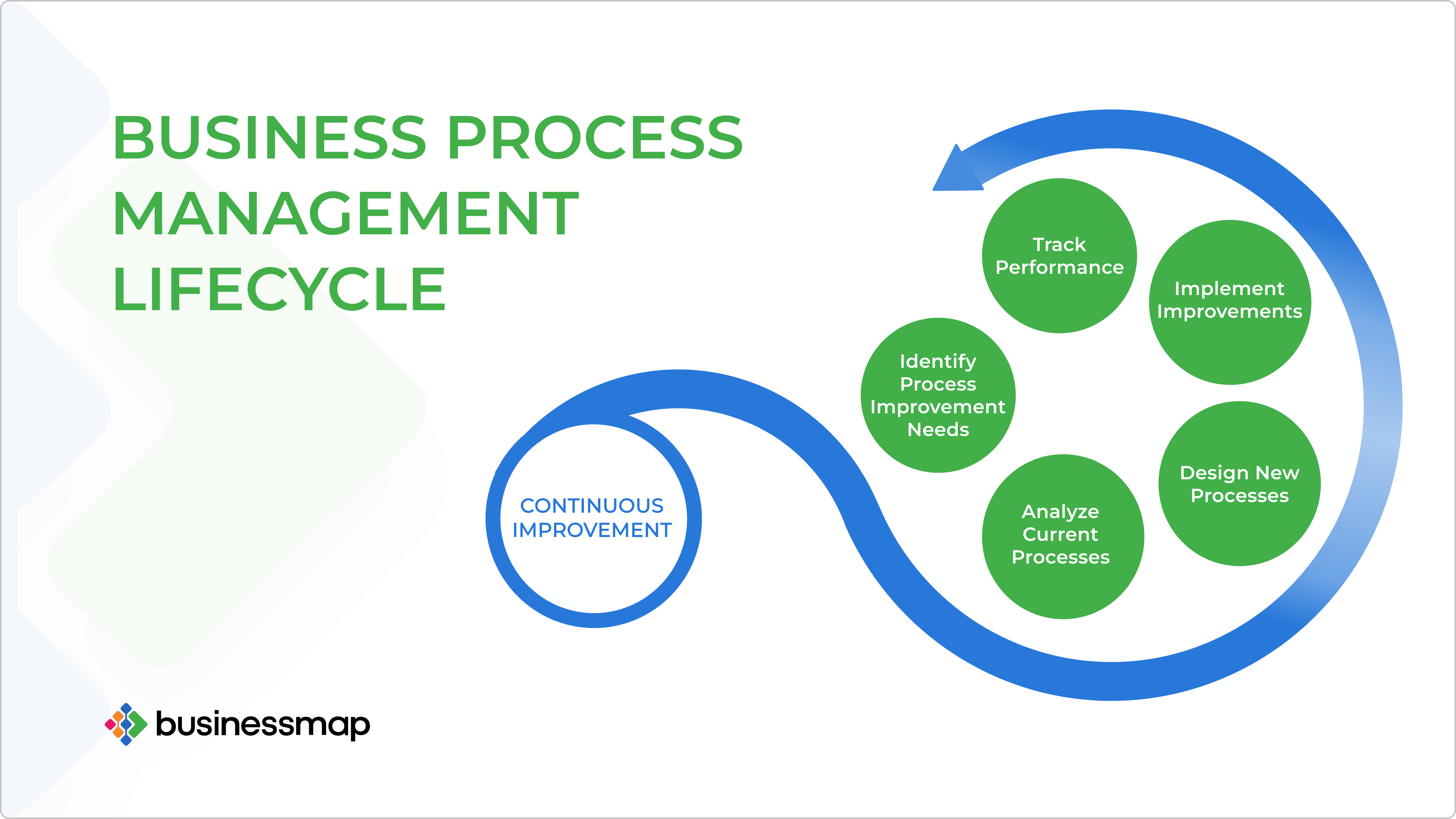
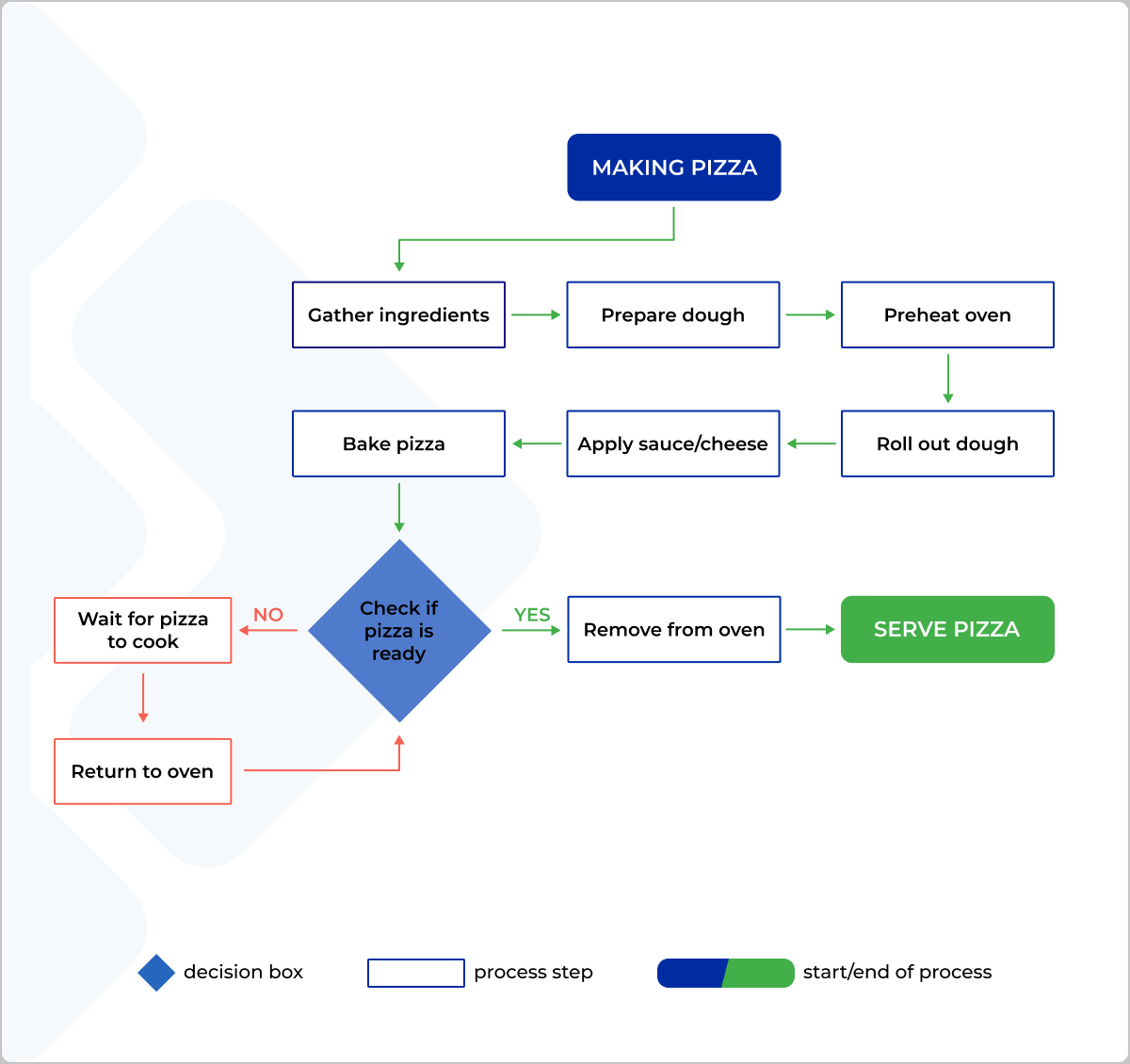 Mapping pizza-making process using a flowchart
Mapping pizza-making process using a flowchart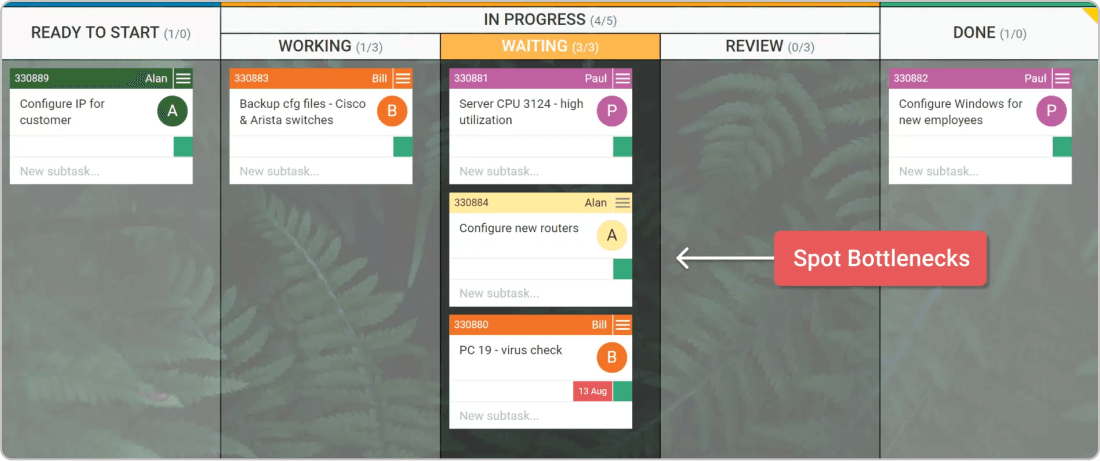 Identifying process bottleneck using a kanban board in Businessmap
Identifying process bottleneck using a kanban board in Businessmap 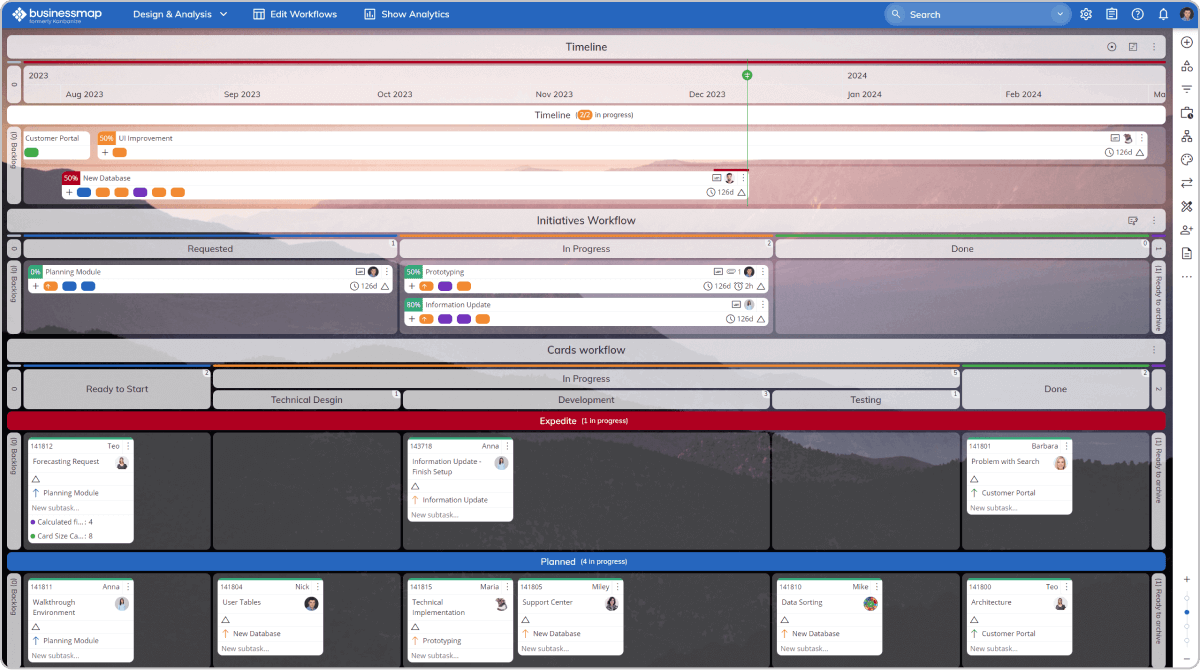 Visualizing timelines, initiatives and work items breakdown in Businessmap
Visualizing timelines, initiatives and work items breakdown in Businessmap 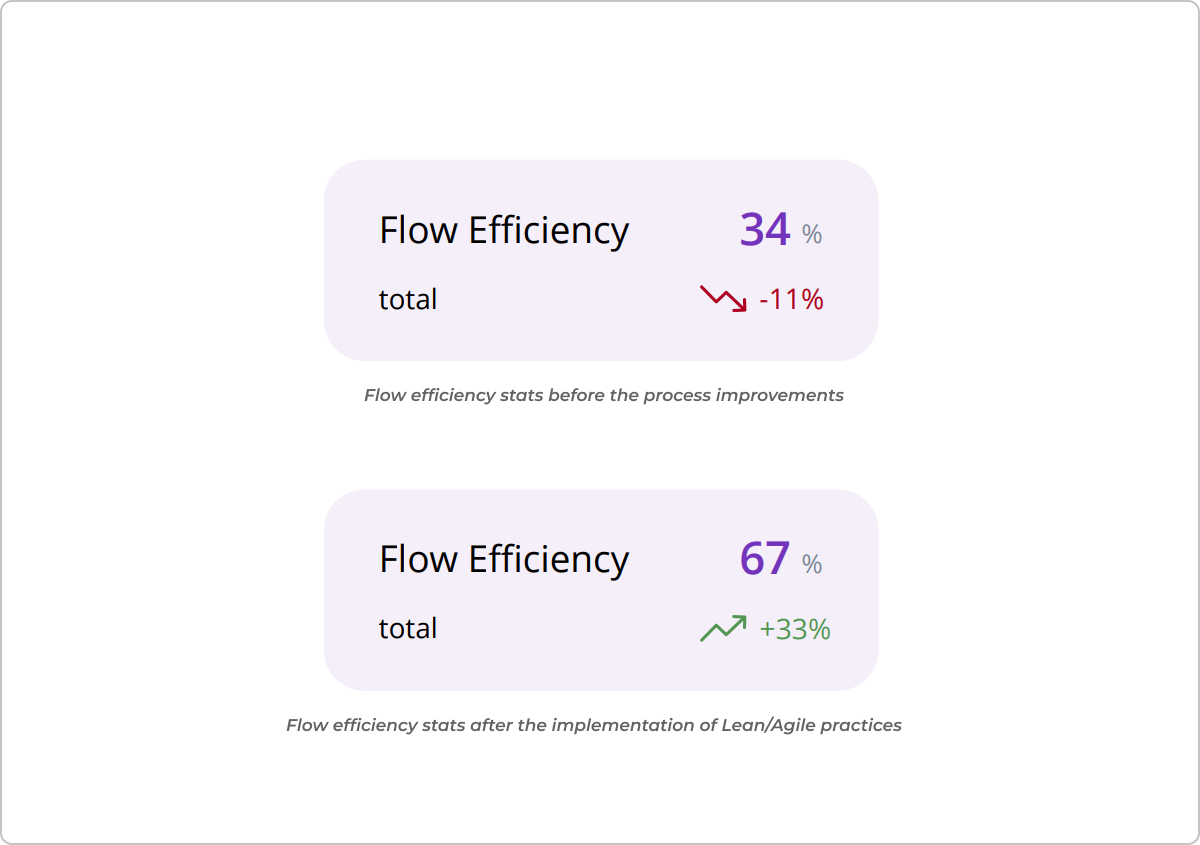 Operational efficiency data of a purchasing workflow before and after process improvement
Operational efficiency data of a purchasing workflow before and after process improvement 

